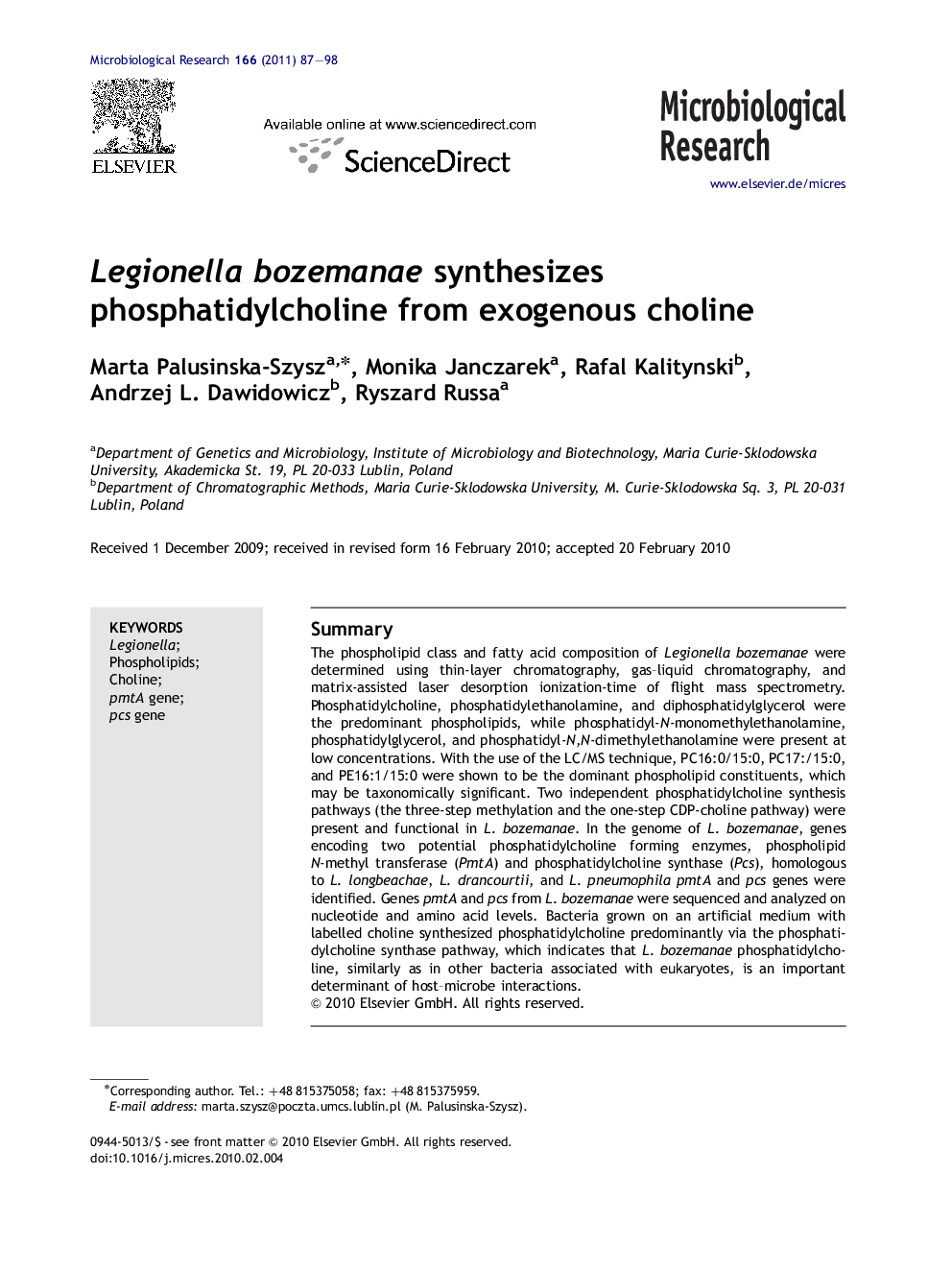| Article ID | Journal | Published Year | Pages | File Type |
|---|---|---|---|---|
| 2092368 | Microbiological Research | 2011 | 12 Pages |
SummaryThe phospholipid class and fatty acid composition of Legionella bozemanae were determined using thin-layer chromatography, gas–liquid chromatography, and matrix-assisted laser desorption ionization-time of flight mass spectrometry. Phosphatidylcholine, phosphatidylethanolamine, and diphosphatidylglycerol were the predominant phospholipids, while phosphatidyl-N-monomethylethanolamine, phosphatidylglycerol, and phosphatidyl-N,N-dimethylethanolamine were present at low concentrations. With the use of the LC/MS technique, PC16:0/15:0, PC17:/15:0, and PE16:1/15:0 were shown to be the dominant phospholipid constituents, which may be taxonomically significant. Two independent phosphatidylcholine synthesis pathways (the three-step methylation and the one-step CDP-choline pathway) were present and functional in L. bozemanae. In the genome of L. bozemanae, genes encoding two potential phosphatidylcholine forming enzymes, phospholipid N-methyl transferase (PmtA) and phosphatidylcholine synthase (Pcs), homologous to L. longbeachae, L. drancourtii, and L. pneumophila pmtA and pcs genes were identified. Genes pmtA and pcs from L. bozemanae were sequenced and analyzed on nucleotide and amino acid levels. Bacteria grown on an artificial medium with labelled choline synthesized phosphatidylcholine predominantly via the phosphatidylcholine synthase pathway, which indicates that L. bozemanae phosphatidylcholine, similarly as in other bacteria associated with eukaryotes, is an important determinant of host–microbe interactions.
